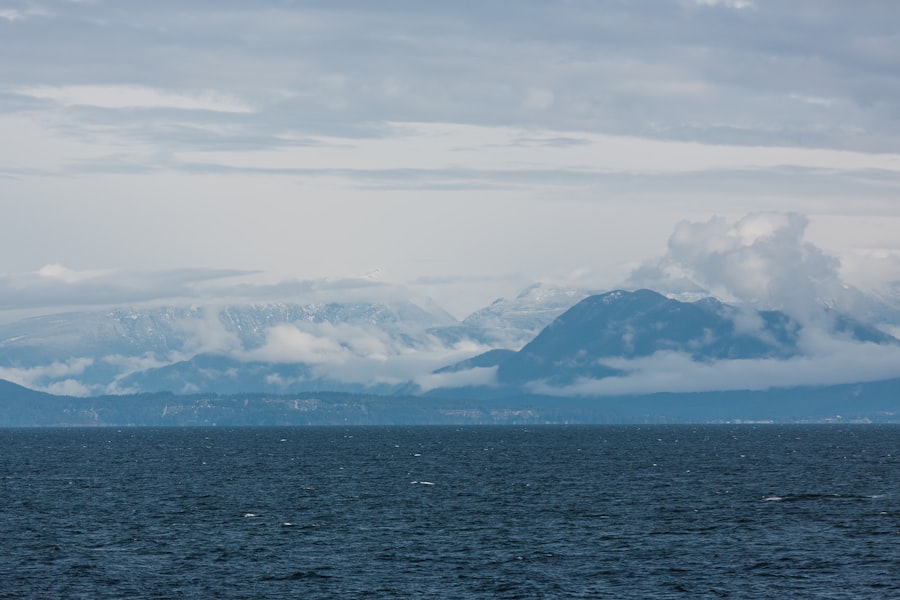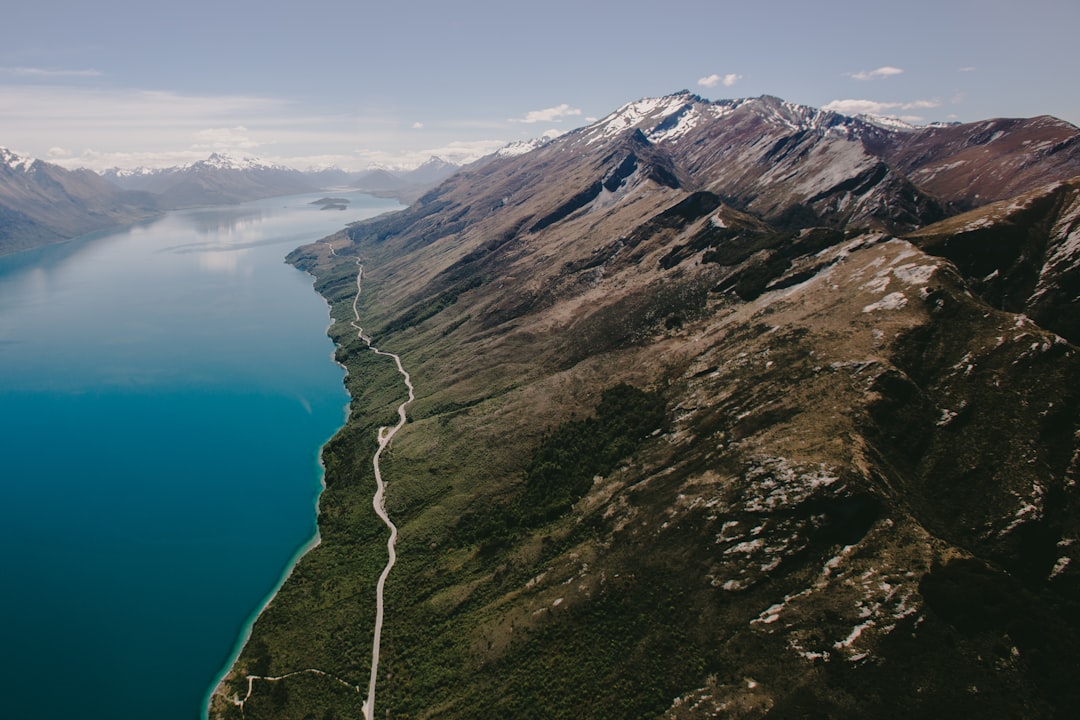The Drake Passage, a body of water that separates South America from Antarctica, is renowned for its tumultuous seas and breathtaking vistas. Named after the English explorer Sir Francis Drake, who navigated these waters in the late 16th century, the passage has become a focal point for adventurers, researchers, and nature enthusiasts alike.
This waterway is often characterized by its unpredictable weather and challenging navigation conditions, making it both a daunting and exhilarating experience for those who dare to traverse it. The Drake Passage serves as a gateway to the Antarctic region, offering a unique opportunity to witness some of the planet’s most pristine environments. As travelers embark on journeys through this iconic passage, they are met with the duality of its beauty and peril, a testament to nature’s raw power.
Key Takeaways
- The Drake Passage is a body of water between South America’s Cape Horn and the South Shetland Islands of Antarctica, known for its turbulent seas and challenging weather conditions.
- The geographical significance of the Drake Passage lies in its role as the only connection between the Pacific and Atlantic Oceans, allowing for the circulation of water and marine life between the two.
- The weather and climate conditions in the Drake Passage are characterized by strong winds, rough seas, and rapidly changing weather patterns, making it one of the most challenging maritime environments in the world.
- The Drake Passage is home to a diverse range of wildlife and marine life, including penguins, seals, whales, and various seabird species, making it a popular destination for wildlife enthusiasts and researchers.
- Navigating the Drake Passage presents significant challenges, including unpredictable weather, strong currents, and ice hazards, requiring careful planning and strategic navigation for safe passage.
Understanding the geographical significance of the Drake Passage
Geographically, the Drake Passage plays a pivotal role in the Southern Ocean’s ecosystem and global ocean currents. It connects the Atlantic and Pacific Oceans, allowing for the exchange of water masses that significantly influence climate patterns across the globe. The passage is characterized by its deep waters, with depths reaching over 4,000 meters (13,000 feet), which contribute to its unique marine environment.
The underwater topography includes various features such as ridges and valleys that further enhance its ecological diversity. The significance of the Drake Passage extends beyond its physical characteristics; it also serves as a critical habitat for numerous species. The mixing of warm and cold waters creates nutrient-rich upwellings that support a vibrant marine ecosystem.
This area is particularly important for migratory species, including whales and seabirds, which rely on the passage for feeding and breeding. Understanding the geographical significance of the Drake Passage is essential for appreciating its role in both local and global ecological systems.
Weather and climate conditions in the Drake Passage

The weather in the Drake Passage is notoriously unpredictable, characterized by rapidly changing conditions that can shift from calm to stormy within moments. The passage is often referred to as “the most dangerous sea in the world” due to its fierce winds and high waves, which can reach heights of over 10 meters (33 feet). The convergence of cold Antarctic waters with warmer currents from the north creates a volatile atmosphere that can challenge even the most experienced mariners.
Seasonal variations also play a significant role in shaping the climate of the Drake Passage. During the summer months, from November to March, temperatures are relatively milder, making it a more favorable time for navigation. However, even during this period, storms can arise unexpectedly, leading to treacherous sailing conditions.
In contrast, winter months bring harsher weather patterns, with increased ice formation and reduced visibility. Navigators must remain vigilant and adaptable to ensure safe passage through this formidable stretch of water.
Wildlife and marine life in the Drake Passage
| Category | Metrics |
|---|---|
| Whales | Several species of whales, including humpback, minke, and orca, can be found in the Drake Passage. |
| Penguins | Large colonies of penguins, such as the chinstrap, gentoo, and Adélie, inhabit the islands and shores of the Drake Passage. |
| Seals | Fur seals and elephant seals are commonly spotted in the waters and on the shores of the Drake Passage. |
| Albatross | The Drake Passage is home to several species of albatross, including the wandering albatross, which has the largest wingspan of any bird. |
| Fish | The waters of the Drake Passage are rich in marine life, including various species of fish such as Antarctic toothfish and krill, which are essential to the food chain in the region. |
The Drake Passage is teeming with diverse wildlife and marine life, making it a prime destination for nature enthusiasts and researchers alike. The nutrient-rich waters support an array of species, including krill, which forms the foundation of the food web in this region. This small crustacean attracts larger predators such as seals, penguins, and various species of whales, including humpback and orca whales.
The abundance of life in these waters highlights the ecological importance of the Drake Passage. Birdwatchers are also drawn to this area due to its rich avian diversity. Species such as albatrosses, petrels, and skuas can often be seen soaring above the waves or diving into the water in search of food.
The sight of these magnificent birds gliding effortlessly against the backdrop of dramatic landscapes adds to the allure of the passage. For many visitors, witnessing this vibrant wildlife is one of the most memorable aspects of their journey through the Drake Passage.
Historical significance and exploration of the Drake Passage
The historical significance of the Drake Passage is deeply intertwined with exploration and maritime history. Sir Francis Drake’s voyage in 1578 marked one of the first recorded crossings of this treacherous waterway, paving the way for future explorers. His journey not only contributed to European knowledge of this remote region but also highlighted the potential for trade routes between Europe and Asia via the southern seas.
Throughout history, numerous expeditions have sought to navigate the Drake Passage, each contributing to our understanding of this challenging environment. Explorers such as Ernest Shackleton and Robert Falcon Scott ventured into these waters during their quests to reach Antarctica, facing immense challenges along the way. Their stories of bravery and perseverance continue to inspire modern adventurers who seek to follow in their footsteps while navigating the same perilous waters.
Navigational challenges and strategies for crossing the Drake Passage

Navigating the Drake Passage presents numerous challenges due to its unpredictable weather patterns and strong currents. Mariners must contend with powerful winds that can create steep waves and sudden squalls, making it essential for vessels to be well-equipped and crewed by experienced personnel. Understanding local weather forecasts and oceanographic conditions is crucial for planning safe crossings.
To mitigate risks associated with navigating this passage, sailors often employ various strategies. Many choose to travel during the summer months when conditions are generally more favorable. Additionally, modern technology has enhanced navigational capabilities; GPS systems and advanced weather forecasting tools allow mariners to make informed decisions about their routes.
Despite these advancements, however, seasoned sailors emphasize that respect for the sea’s power remains paramount when traversing this formidable stretch of water.
Safety precautions and emergency protocols for navigating the Drake Passage
Safety is a top priority when navigating the Drake Passage due to its inherent risks. Mariners are advised to conduct thorough pre-voyage preparations that include safety drills and equipment checks. Life jackets, emergency beacons, and first aid kits should be readily accessible on board.
Additionally, vessels should be equipped with lifeboats or life rafts in case of emergencies. In case of adverse weather conditions or emergencies at sea, having a well-defined emergency protocol is essential. Crew members should be trained in emergency response procedures, including how to handle medical emergencies or equipment failures.
Communication systems must be operational at all times to ensure that vessels can maintain contact with coast guard services or other ships in the area if assistance is needed. By prioritizing safety measures and preparedness, mariners can navigate the Drake Passage with greater confidence.
Tips for preparing for a journey through the Drake Passage
Preparing for a journey through the Drake Passage requires careful planning and consideration of various factors. Travelers should begin by researching their chosen route and understanding what to expect during their crossing. It is advisable to book passage with reputable cruise lines or expedition companies that have experience navigating these waters.
Packing appropriately is also crucial for ensuring comfort during the journey. Layered clothing is recommended due to fluctuating temperatures; waterproof outer layers can protect against splashes from waves or rain. Additionally, travelers should consider bringing seasickness medication or remedies, as many individuals experience motion sickness while crossing this notorious stretch of water.
By taking these steps, adventurers can enhance their overall experience while traversing one of nature’s most awe-inspiring passages.
Popular routes and destinations for cruises through the Drake Passage
Several popular routes traverse the Drake Passage, each offering unique experiences for travelers seeking adventure in this remote region. One common route begins in Ushuaia, Argentina—the southernmost city in the world—before crossing into Antarctic waters.
Another popular option is an expedition cruise that focuses on wildlife observation and scientific research. These cruises may include landings on various Antarctic islands or visits to research stations where travelers can learn about ongoing conservation efforts. Regardless of the chosen route, each journey through the Drake Passage promises breathtaking scenery and unforgettable encounters with nature.
The allure of the Drake Passage for adventure seekers and nature enthusiasts
The allure of the Drake Passage lies not only in its dramatic landscapes but also in its reputation as a rite of passage for adventure seekers. For many travelers, crossing this notorious body of water represents an achievement—a testament to their spirit of exploration and willingness to embrace challenges. The thrill of navigating turbulent seas while surrounded by stunning vistas creates an unparalleled sense of adventure.
Nature enthusiasts are equally captivated by what lies beyond the waves—the opportunity to witness unique wildlife in their natural habitats is a major draw for many visitors. From observing majestic whales breaching in the distance to watching penguins waddle along icy shores, each moment spent in this pristine environment fosters a deep appreciation for Earth’s natural wonders. The combination of adventure and natural beauty makes the Drake Passage an irresistible destination for those seeking both excitement and tranquility.
The enduring allure and challenges of navigating the Drake Passage
In conclusion, the Drake Passage stands as a testament to nature’s power and beauty—a place where adventure meets unpredictability. Its geographical significance as a connector between oceans underscores its role in global climate dynamics while providing vital habitats for diverse marine life. Despite its challenges—ranging from treacherous weather conditions to navigational complexities—the allure of this passage continues to draw explorers from around the world.
As travelers embark on journeys through these storied waters, they are reminded not only of their own resilience but also of humanity’s enduring connection with nature’s wildest frontiers. The stories etched into every wave serve as a reminder that while navigating such formidable passages may be fraught with challenges, it is precisely these experiences that enrich our understanding of both ourselves and our planet.
The Drake Passage, a crucial waterway connecting the Atlantic and Pacific Oceans, is renowned for its challenging navigation conditions and rich biodiversity. For those interested in exploring more about this fascinating region, an insightful article can be found on MyGeoQuest. This article delves into the unique geographical and ecological aspects of the Drake Passage, offering readers a comprehensive understanding of its significance. To read more about this intriguing topic, visit the article on
